Center Points
Horse Manure Management
One 1,000-pound horse can produce 50 pounds of manure and urine per day. Fifty pounds over one month equals 1,500 pounds of manure. Now mix that manure and urine with wood shavings if the animal is stalled and you end up with approximately 1,950 pounds of spent nutrients per horse per month. Manure contains valuable nutrients plants need. If the nutrients are not used they become a pollutant and are wasted. Knowing the amount of manure produced on your farm will help you make informed decisions of what your options may be in regards to manure management.
In ND, there are manure stacking or stockpiling guidelines to help animal owners decide which storage option is best for their farm.
- Short-term Manure Stockpiles: Manure may not be stockpiled for more than nine months at short-term stockpile locations. The same location cannot be used from year to year.
- Permanent Manure Stockpiles: Manure stockpiles for more than nine months must be stored at a permanent stockpile location. Involves soil investigation and regulatory oversight.
No matter which option you choose, stockpiling site selection is key. Sandy soils have rapid permeability and allows nitrate to move quickly through the soil to ground water (leaching), while loamy or clayey soils have slower permeability which helps retain nitrate in the soil profile. Manure stockpiles may not be located in gravel pits, or any other excavations; along streams or lakes; within a flood plain; or, within 50 feet of a private water supply well or 100 feet of a public water supply well.
Aside from the pollution factor, there are other reasons you will want to consider your manure management strategies including flies, bacteria and pathogens, rodents, odors, internal parasites, and weed seeds.
One way to manage your horse’s manure is through composting, which is a thermophilic (heat-loving) decomposition process. You will find a guide to the process and management of animal manure compost here: https://www.ag.ndsu.edu/publications/livestock/composting-animal-manures-a-guide-to-the-process-and-management-of-animal-manure-compost. Composting your horse’s manure not only kills pathogens and reduces weed seeds, it also has the ability to kill fly larvae as well as internal parasite larvae!
This spring, NDSU Extension has hosted a Horse Management Webinar series. You can find all the recorded webinars with resources here: https://www.ag.ndsu.edu/lem/horse-management-webinars. The series includes entire presentations on manure management, spring/summer grazing management and internal/external parasite management. We are wrapping up the series on June 3 at noon CST with a discussion about horse immunity and biosecurity. You can register for the webinar here: www.tinyurl.com/NDSUHorseBiosecurity2020.
With just over 45,000 horses in North Dakota there is a good reason to learn about managing the road apples.
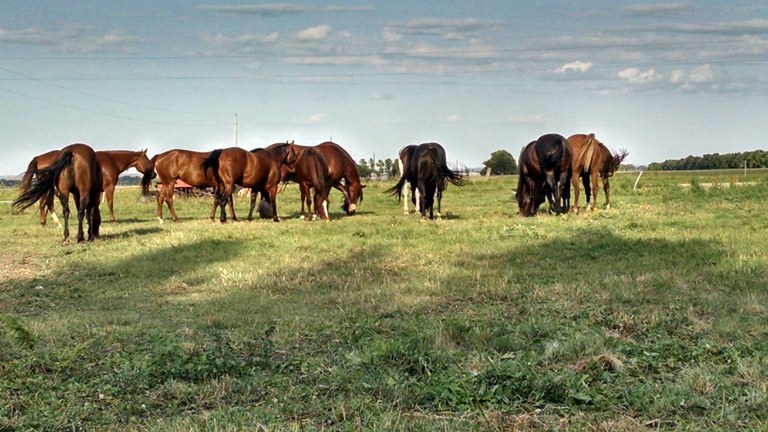
Horses grazing in western North Dakota.
Mary Keena
Mary.Keena@ndsu.edu
Extension Specialist – livestock environmental management
Soybean Planting Rate and Row Spacing
North Dakota State University has a long tradition of recommending the establishment of a soybean population of 150,000 plants per acre across row spacings. This recommendation continues to exist across the state to optimize soybean seed yield.
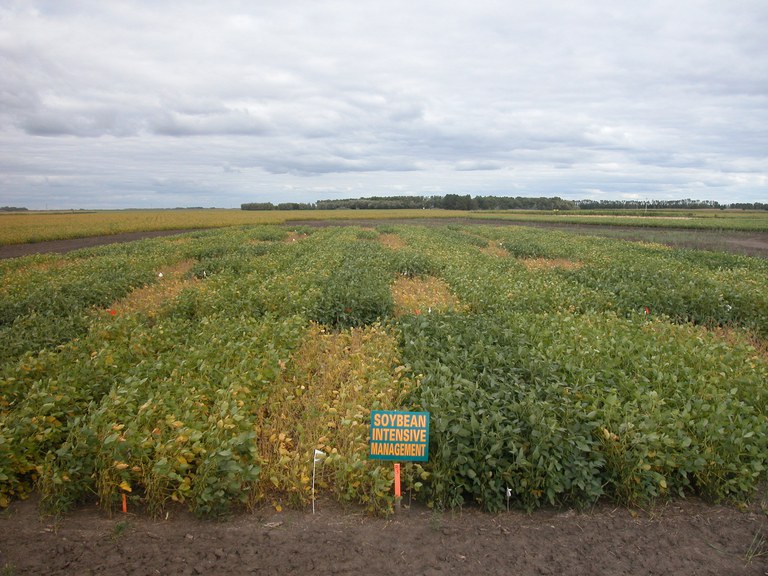
An intensive management soybean trial at the NDSU Carrington Research Extension Center.
This article summarizes the evaluation of data generated by 37 NDSU soybean planting rate and row spacing field trials conducted during 2008 through 2019. A total of 390 data points (observations) comprise the database. Seed yield was normalized for each trial by comparing the treatment average to the overall trial mean. The treatment average within each individual trial was divided by the trial mean and multiplied by 100 to get the relative yield in percent (the trial mean was set at 100%). With all yield data on the same scale (relative percent), data were evaluated across trials.
The relative soybean seed yield among planting rates, ranging from 80,000 to 220,000 pure live seeds (PLS) per acre, averaged across row spacings and all North Dakota site-years is shown in Figure 1. Planting rates of 125,000 to 200,000 PLS per acre generally provided above-average yield, with 169,000 PLS per acre optimizing yield. In Eastern trials, 8% of planted PLS per acre did not develop into viable soybean plants. Assuming that on average 8% of the PLS does not result in established plants and the general planting rate that provided highest yield across all trials was 169,000 PLS, we can expect about 155,000 established plants to maximize yield.
Figure 1. Soybean relative seed yield with plating rates averaged across row spacings in North Dakota.
The relative soybean seed yield among row spacings, ranging from 7- to 30-inches, averaged across planting rates and all North Dakota site-years is shown in Figure 2. Based on the regression equation, the relative yield increases by 0.5% for each inch the spacing is narrower from 30 inches. Narrow rows (less than 15 inches) provided above-average yield, with 7-inch rows based on the regression equation providing about 106% yield compared to trial averages of 100%.
Figure 2. Soybean relative seed yield with planting rates averaged across row spacings in eastern North Dakota.
A pending NDSU Extension circular that contains details regarding the summary of the NDSU soybean planting rate and row spacing trials, including results from eastern and western regions of North Dakota, will be available later during May.
Greg Endres
Gregory.Endres@ndsu.edu
Extension Agronomist
Timing of Cover Crop Establishment - Revisited
Interest in planting cover crops has increased greatly the past few years in North Dakota. Traditionally seeded after a small grain crop, ND’s short growing season can limit successful establishment. Most years, moisture for germination is available for only 1-2 days after harvesting the small grain crop.
Seeding later than this short window delays cover crop germination until the next adequate rainfall event, sometimes days or weeks after harvest. Any delay drastically reduces biomass produced by the cover crop. Combining and seeding at the same time can be challenging for most operations when labor is in short supply.
This led us to ask the questions:
- Where are the opportunities within the growing season to successfully establish the cover crop
- Without impacting grain yield of the cash crop
- Without significantly increasing production costs
We conducted a trial that was replicated at several other NDSU Research Extension Centers during the 2015-2018 growing seasons.
The treatments:
- Check (no cover crop seeded)
- At seeding with the drill down the same seed tubes as the barley
- Broadcast cover seed at 4-5 leaf-stage barley (herbicide application timing)
- Broadcast cover seed at anthesis (fungicide application timing)
- Drill seed after harvest (traditional timing and method)
Below are the combined results from the three locations that were not severely impacted by drought (produced a harvestable grain crop): Carrington, Langdon, and North Central REC’s
- The take homes from this trial are that only one location, one year, out of 12 site-years had a negative impact on the barley crop.
- The at-seeding and 4-5 leaf cover crop establishment timings produce significantly more biomass than the traditional after-harvest establishment.
Barley and cover crop performance.
Below are the combined results for the test crop of HRSW the following year on the described treatments above. There was no fertilizer applied to determine any impact based on the cover crop treatment. Ultimately, there were no differences across all years and locations.
Hard red spring wheat performance.
Based on the results from this trial, we are now moving forward with a few trials:
- Two trials investigating the moisture requirements to get some common cover crops species to germinate and establish.
- One trial looking at how much we need to reduce our wheat grain crop seeding rate to successfully produce more cover crop biomass at the same timings as the trial in this article
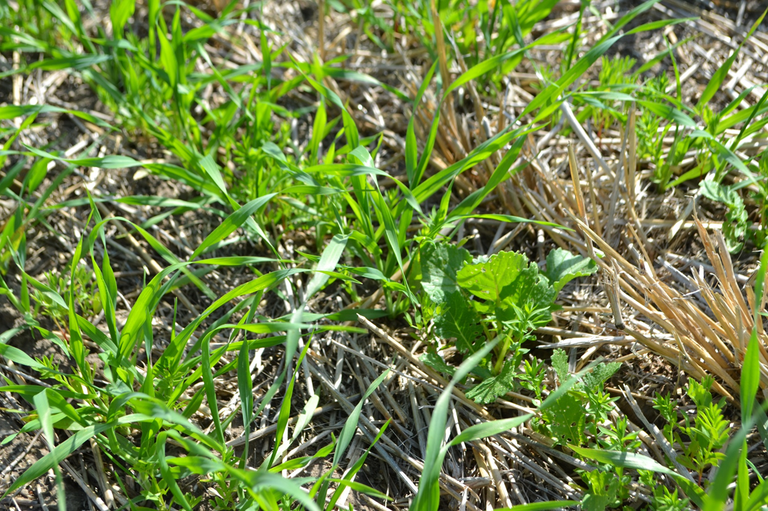 Emerging barley interseeded with cover crop at seeding at the NDSU Carrington Research Extension Center.
Emerging barley interseeded with cover crop at seeding at the NDSU Carrington Research Extension Center.
Ezra Aberle
Ezra.Aberle@ndsu.edu
Research Specialist
Necropsy – Determining Why a Calf Died
Terminology – A necropsy is a postmortem examination to discover cause of death. An autopsy is a necropsy on humans. We request a necropsy on a dead calf.
It is difficult to know what caused a newborn calf to die hours (or days) after death. Enlisting the help of a veterinarian to identify cause(s) of death in calves soon after it occurs is always encouraged.
Sometimes the factors leading to death are easily determined upon necropsy:
- A cow stepping on a young calf may not leave ‘a mark’ on the outside but does cause internal organ damage which may later lead to death.
- Weak calves can be a result of limited nutritional resources for the cow during pregnancy. A necropsy can identify lack of fat reserves in the calf.
- No clotted milk in the stomach indicates the calf never nursed. Either the calf didn’t figure out how to nurse or the cow has no milk.
- Lungs that don’t float in water indicate the calf was born dead and never breathed.
- A broken leg could be a spiral facture that’s shattered in pieces and results in a slow death.
Infectious diseases can also cause death. Certified pathologists and diagnosticians at the NDSU Veterinary Diagnostic Lab (VDL) perform necropsies and can run multiple tests to determine or rule out possible causes of death. With abortions, the calf and placenta are needed at the VDL to help identify infections. It might be a disease than can be prevented by vaccination or treated with antibiotics.
Viral infections require a different method of treatment. Antibiotics won’t cure a virus but may help with a resulting bacterial infection. Calf scours (diarrhea) and pneumonia can be caused by viruses and/or bacteria. Keeping records of birth dates can be a helpful tool when trying to figure out why a calf died. Age of calf at death gives direction as to ruling out causes of death. Scours at a few days of age may be bacterial, at 10 days viral, and at 21 days protozoal. These are generalities and the cause of scours should be investigated immediately to prevent other calves from becoming ill. The VDL test results will aid in the proper course of treatment for other sick calves.
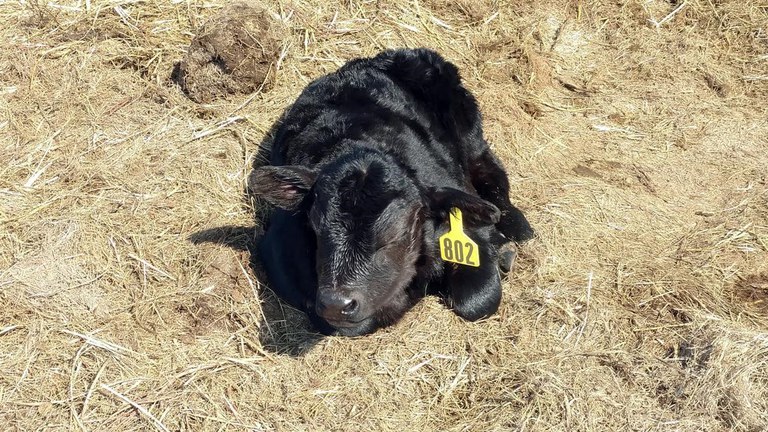
Healthy, new calf napping in the North Dakota sunshine.
Working with your veterinarian and the NDSU VDL can help overcome costly health issues. You can contact the NDSU Veterinary Diagnostic Laboratory at 710-231-8307 and find many helpful resources on their website https://www.vdl.ndsu.edu/.
Karl Hoppe, Ph. D.
Karl.Hoppe@ndsu.edu
Extension Specialist – livestock systems
Apple Tree Diseases
Pruning work continues in the CREC orchard and is starting to pick up speed. I started pruning our apple trees a few weeks ago when there was still one foot of snow cover. After it melted, I switched to the ladder to finish up. Now, I’m finishing the shrubs.
Last summer, Dr. Jim Walla pointed out black rot on one of our ‘Hazen’ apple trees. It was on a top branch that rose to the northeast, which meant that it was fully exposed to warming by afternoon sunlight. That warming during cold periods in late winter most likely cracked the branch and let in the black rot fungus. If I had painted that branch with white latex paint, it could have prevented the frost cracks. In the picture, you will notice the scaly bark and black soot of the fungal spores. I have to say I generally ignore the apple trees after pruning and fruit thinning. I assumed the black area was from normal sooty fungus that develops around some pruned areas. (Are those black rot spores, too?!) And ‘Hazen’ normally has scaly, old bark. So, the development of this infection was a combination of my ignorance and ambivalence. I pruned the branch out last summer and I am keeping an eye out for more.
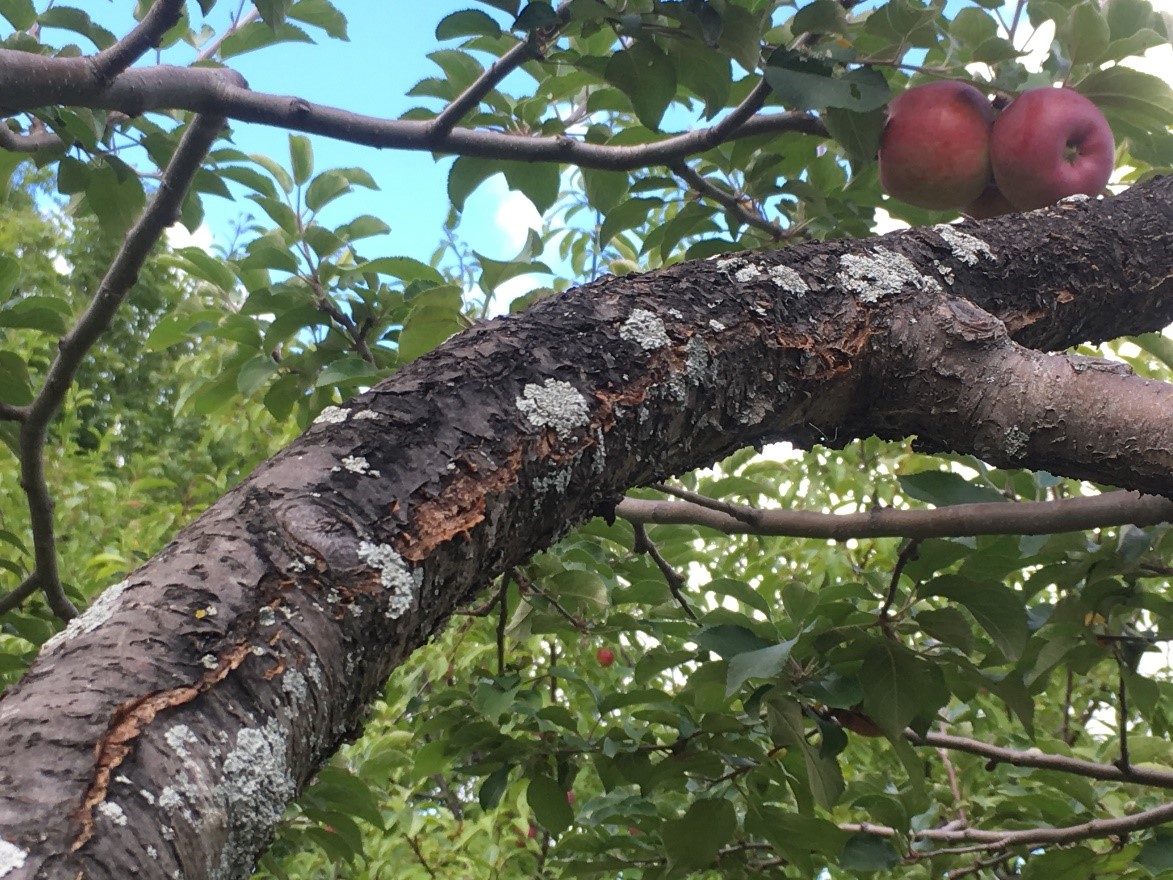 Black rot damage on ‘Hazen’ apple tree branch, Summer 2019.
Black rot damage on ‘Hazen’ apple tree branch, Summer 2019.
Black rot can affect the leaves, fruit and branches of trees. It generally enters through injuries such as frost cracks, hail damage and mower blight. But it also enters via fire blight-injured sites. So, after fire blight, be on the lookout for this fungal problem.
More black rot information: https://www.ag.ndsu.edu/cpr/forestry/diseases-of-apple-trees-black-rot
We also had fire blight in the ‘Sweet 16’ trees in 2019, a cultivar that is normally quite resistant to this bacterial infection. There was a lot of it and I did not remove it during the season. Last fall I spray painted all the affected branches to mark them and then removed them with 2020 pruning. On one tree, I had to remove a couple full branches, and this is unfortunate because ‘Sweet 16’ is so vigorous that any pruning causes even more vegetative growth. This cultivar is tasty. If you want one, try to get it on dwarfing rootstock such as M-26 or Bud9. That will suppress its wild tendencies and cause it to fruit more.
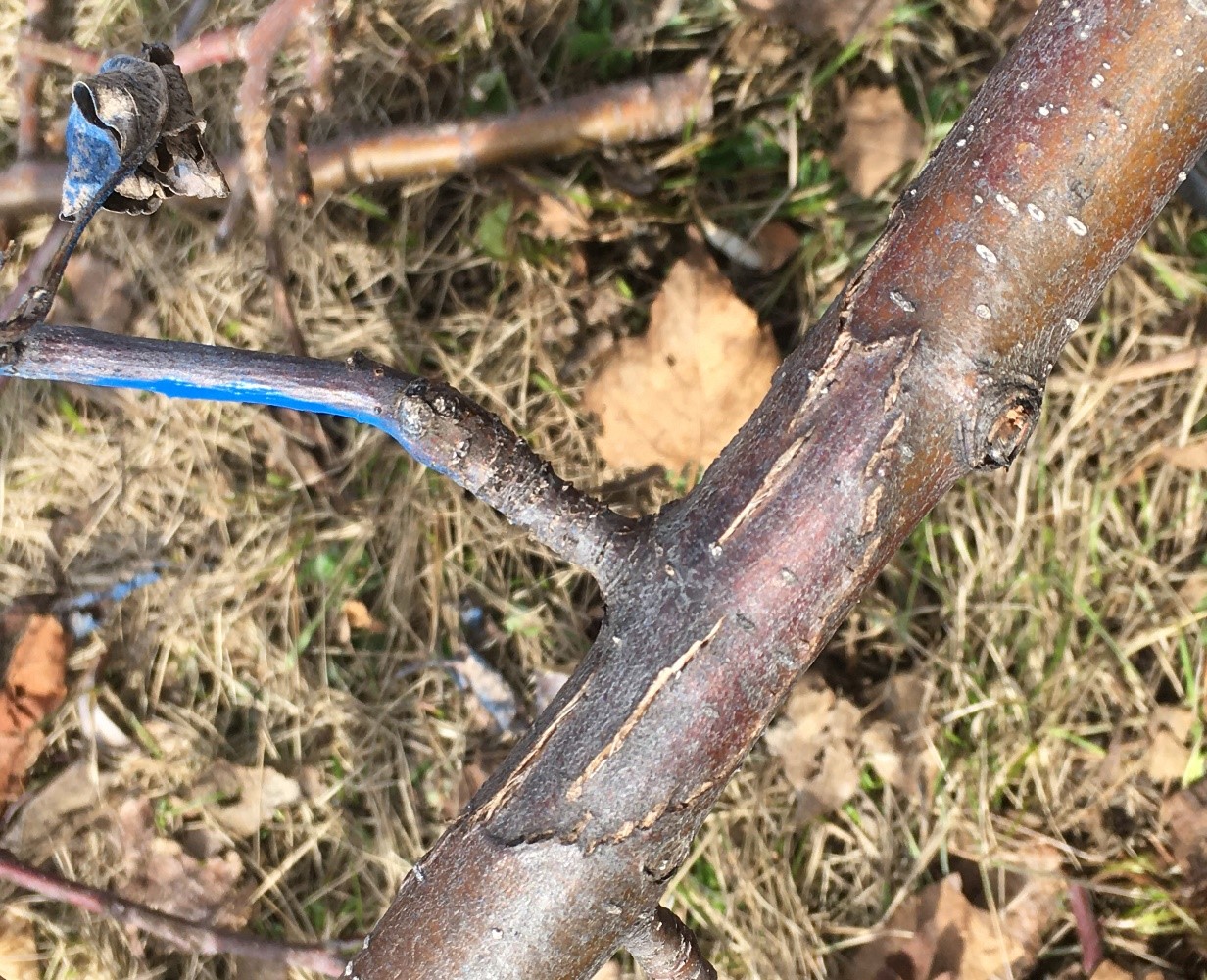 Fire blight canker at the base of an affected ‘Sweet 16’ shoot.
Fire blight canker at the base of an affected ‘Sweet 16’ shoot.
Fire blight is a bacterial infection that arrives at the trees via insects such as bees. In spring, cloudy liquid droplets ooze out of infected spots, insects pick it up on their bodies and then transmit the inoculum to visited flowers. Dew, mist and rain carry the bacteria down into the flower where the bacteria then grows and moves in the vascular tissue. Fire blight is becoming a very extensive problem in the East, affecting both orchards and homeowners.
More information on fire blight: https://www.ag.ndsu.edu/horticulture/fireblight
A good video for pruning basics: https://www.ag.ndsu.edu/publications/lawns-gardens-trees/basic-guidelines-for-pruning-trees-and-shrubs
General apple tree info: https://www.ag.ndsu.edu/drappletree
Kathy Wiederholt
Kathy.Wiederholt@ndsu.edu
Northern Hardy Fruit Project Manager
Let’s Talk About Hemp
Today seems like a good day to talk about hemp!
Hemp production is intriguing to many people in our region. It is unique in that it is a ‘new’ crop but already has several established and several emerging markets, including three different harvest methods depending on the desired product. The three harvestable products are seed oil, cannabidiol (CBD) oil, and fiber. There are varieties best suited to each type of product, and generally you can only harvest one product from your hemp crop. CBD hemp production took off in a big way in 2019, often encompassing the majority of hemp production discussions. Growing CBD hemp is considerably different than seed oil or fiber production. The CBD market is currently the most volatile of the three due to its rapid increase in popularity but also rapid increase in acres. Currently, there are no large markets for hemp fiber in our region. Hemp seed oil is the most stable hemp product in our region and is the focus for this post.
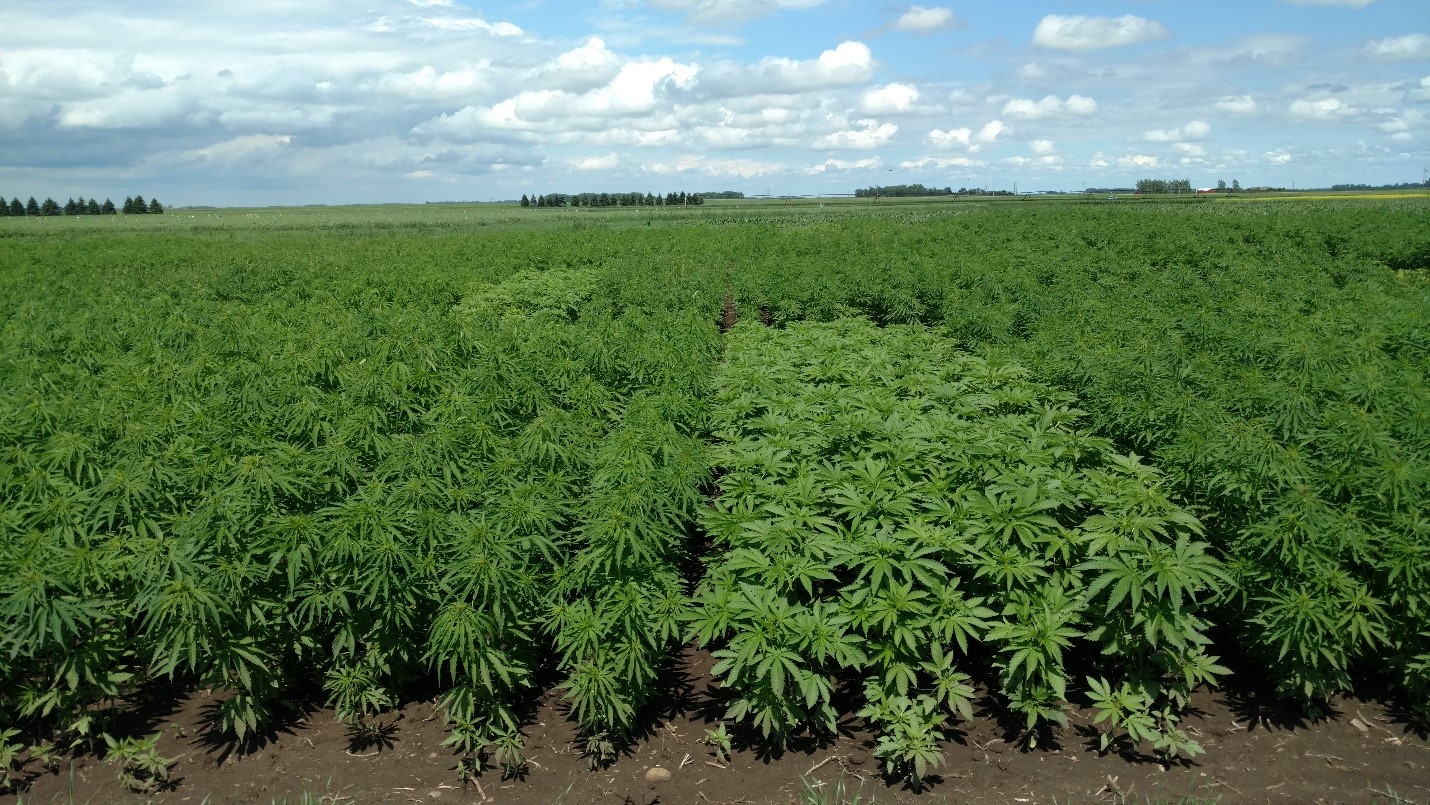 The hemp variety trial at the NDSU Carrington Research Extension Center in early July 2019.
The hemp variety trial at the NDSU Carrington Research Extension Center in early July 2019.
Three hemp variety trials were conducted in 2019 across North Dakota. The trials were located in Langdon, Carrington, and Dickinson. Langdon has been conducting hemp variety trials for several years already, while it was the first time at the other two sites. Variety performance is listed in Table 1. Here are some useful hemp production tidbits:
1) The hemp variety trials were planted at 30 lb/a in 7 or 14” rows the last week of May.
2) Currently, there are no labeled herbicides for hemp production in North Dakota but there are some labeled insecticides.
3) Low levels of cercospora leaf spot and white mold (among others, I am sure) have been observed in ND at non-injurious levels, so crop rotation needs to be a consideration.
4) As in sunflowers, bird predation can be an issue near maturity.
5) Determining when to harvest and how to properly dry it may be the most difficult part of hemp production. This subject would take too much time to cover in this post, but here is a link that includes information about harvest and much more. https://www1.agric.gov.ab.ca/$department/deptdocs.nsf/all/crop15539/$file/HempHarvestStorage.pdf?OpenElement.
NDSU is working to increase regional knowledge of best hemp production practices. Over the next few years there will be study results that include: more variety information, herbicide tolerance, fertility management, bird predation assessment, and CBD hemp management.
Mike Ostlie, Ph. D.
Mike.Ostlie@ndsu.edu
Research Agronomist
Gardening 2020
Hello everyone, I hope you’re doing well through these trying times. We all need to stick together and find a “new norm”. I was going to write about the organic oat/pea intercropping trial, but felt the subject of growing a garden needs to be a “new norm” if you haven’t been growing one. If you are disappointed about not seeing the oat/pea intercrop work, I have a solution for you. The study was written in detail in our 2019 Annual Report. You can find it here https://www.ag.ndsu.edu/carringtonrec/documents/agronomyrd/docs-2019/intercropping-oats-and-field-pea-in-an-organic.pdf or if you have a hard copy of our Annual Report: Volume 60 December 2019, pages 17-20.
Anyway, by now you are probably wondering why I am writing about gardening at a time like this! Well, if you have not witnessed or heard, the grocery store shelves are emptying at unprecedented rates, and in the major cities across this great country, at an even faster pace than here. We do not see it to the degree New York City does, as an example, but it is real! I do not want to cause panic, I want to provide education and positive solutions.
Gardening and local foods are one of them. To use a past example, Americans were asked by our Government to work up part of their lawns to plant a garden to aid in the WWII effort, the program was called “Victory Gardens” and if you are not familiar with them I have provided a link for you to educate yourself on the topic: http://www.sarahsundin.com/victory-gardens-in-world-war-ii/.

I think this program is appropriate to rekindle again given the current situation of the global pandemic, COVID-19, that is currently in the news. Gardening has always been important, maybe now more than ever! An excerpt from the article is below to “wet your appetite”, pun intended!
“Some 20 million Victory Gardens were planted (US population in 1940 was 132 million), and by 1943, these little plots produced 40 percent of all vegetables consumed in the US. It’s estimated that 9-10 million tons of vegetables were grown”.
I think Margaret Mead summed it up quite well with this well-known quote “Never doubt that a small group of thoughtful, committed citizen can change the world; indeed, it’s the only thing that ever has.”
North Dakota’s land grant institution, NDSU, has a long history of vegetable research and plant breeding. The Carrington Research Extension Center has done limited vegetable variety trials, although a recent organic onion variety trial was done in 2016 to aid you in your variety choices for storage onions to last you through the winter months. Here’s the link if you care to review it: https://www.ag.ndsu.edu/CarringtonREC/center-points/organic-onion-evaluation. If you would like to view all of the NDSU onion variety trials the link below will get you that data here: https://www.ag.ndsu.edu/varietytrials/onion
If you would like to look at the recommend varieties for a number of adapted vegetables to North Dakota use this link https://www.ag.ndsu.edu/homegardenvarietytrials/documents/recommendations2020.pdf to view the “2020 Vegetable Varieties for North Dakota” NDSU Extension publication. Our NDSU Extension people really have got it together, don’t they? They really are a bunch of good public servants and we are blessed to have them. If you want to participate in your own vegetable research or find out what other gardeners are doing in terms of vegetable evaluations you can look here: https://www.ag.ndsu.edu/homegardenvarietytrials
Well I have used up more than my allotted my space, (sorry Mary), although I must tell you, if you are going to order garden seed from your favorite seed catalog and you not aware of the current demand across the nation, I would do it sooner rather than later as the seed companies are currently overloaded with seed orders. I ordered mine 3 weeks ago and I was on hold for quite some time to place my order!
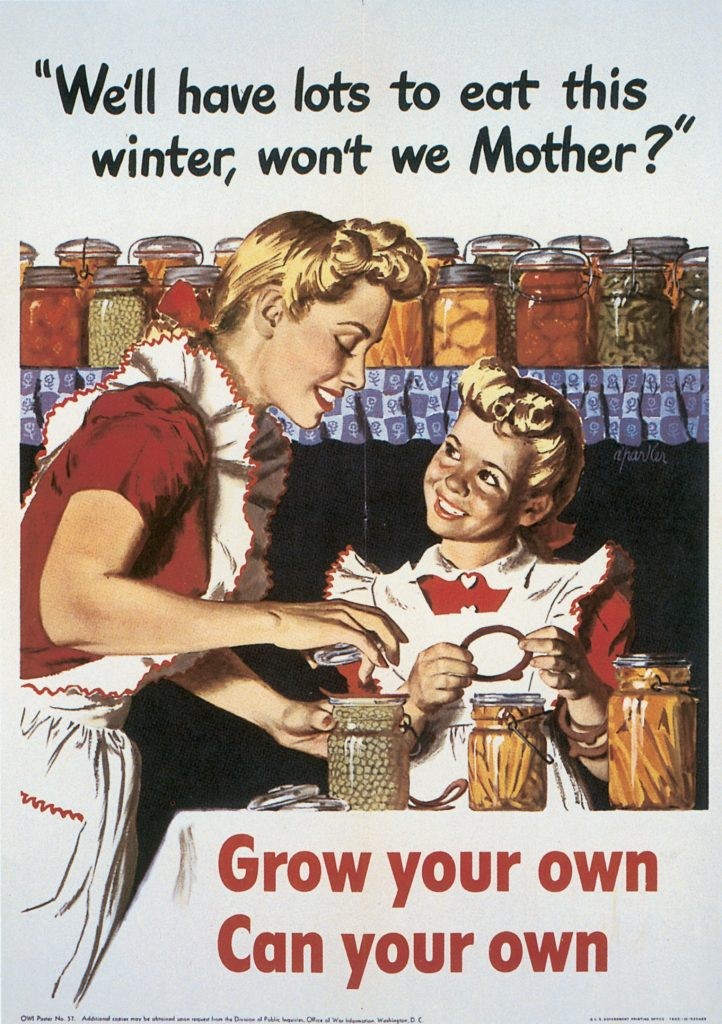
Thank you for reading and considering gardening. My hope for you is a successful and safe gardening season. I pray the sun shines, the bugs stay away, there are limited plant diseases, weeds are controllable, there is no hail, the rains come when needed, and you have a bountiful harvest.
Stay safe.
Steve Zwinger
Steve.Zwinger@ndsu.edu
Agronomy Research Specialist
North Dakota Angus University 2020 Summer Feed-out Program
The original intent of my article was going to focus on this year’s North Dakota Angus University, and I will bring it back to that point in a minute. Typically, when I write my Center Points articles, I usually do so thinking about current times and what is happening from an animal agriculture perspective in my life. But as I write this one, the world and the perspective of the people in it is changing. Right now, it seems these changes are occurring by the minute. While we don’t yet know how the current health challenges we face will ultimately be resolved, we as livestock producers still know a few things 1) livestock still need to be fed, and 2) calving doesn’t stop until the last cow has her calf. Perhaps in some respects those facts are a small bit of normalcy we in agriculture can hang onto in these challenging times.
Now, in regard to the North Dakota Angus University, we are currently continuing as originally planned and will be taking consignments the first week of June 2020. Calves consigned to the program must be 50% or greater black angus genetics. Producers should also target a weight between 800-900 pounds at arrival. All calves will be marketed in September. Calves consigned to this year’s feed-out will be part of a research project evaluating how roughage inclusion rate impacts rumen pH and feedlot performance of steers fed wheat-based finishing diets. The project is being supported by the North Dakota State Board of Agriculture Research and Education – agriculture research fund. North Dakota producers interested in consigning calves are encouraged to contact Bryan at 701.652.2951 or by email bryan.neville@ndsu.edu.
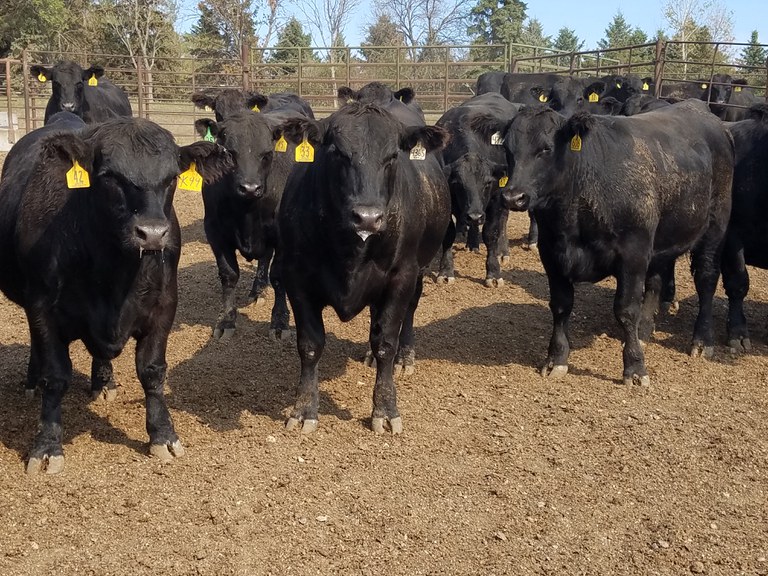
Angus steers in a past North Dakota Angus University Summer Feed-out Program at the NDSU Carrington REC.
Click here to view the information poster.
Bryan Neville, Ph.D.
Bryan.Neville@ndsu.edu
Animal Scientist
Late-season Corn Development Notes
During the 2020 Advanced Crop Advisers Workshop, two regional corn specialists shared information on late-season corn seed development and response to the 2019 environment. The following are selected notes, primarily from Joel Ransom, NDSU Extension agronomist and Emerson Nafziger, University of Illinois.
- ND corn grain yield has annually increased an average of about 0.75 bushel per acre from 1980 through 2019.
- Corn growing degree day units (GDDU): This system was arrived at by collecting a lot of temperature and crop stage data; it’s not “theoretical”. 50 degrees F as the base temperature implies no growth or photosynthesis (PS) below 50 degrees. 86 degrees F as the high temperature “cutoff” implies that growth or PS rates above that are the same as at 86 degrees F. Corn PS increases with temperature, up to maybe 100 degrees; the cutoff is because factors like drought (and maybe night temperatures) often restrict plant development in the field.
- The grain development period (R1-R6 growth stages) averages 50 to 60 days, but “real fill” period is during about 30 days, primarily during dent (R5 stage). During dent, sugars pour into the kernels, where they are converted into starch, and the starch begins to “pack” into endosperm cells. A starch line (packed starch at the crown, less and “looser” starch below) appears early, starting at the top of the kernel and proceeding down to the cob. More than half of kernel dry weight is deposited during the dent stage.
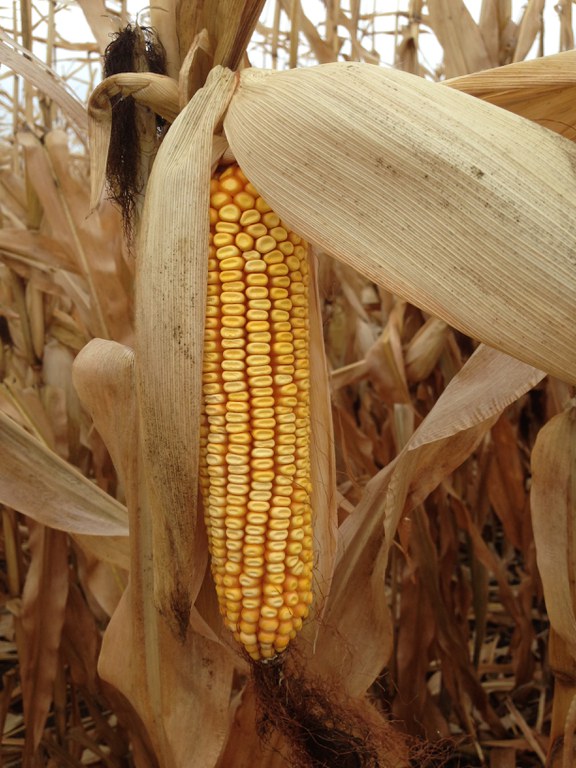
Mature, dry corn ready to be combined.
- About 190 GDDU are required for corn at the half-milk stage to reach physiological maturity (R6 stage). If the plant is killed by frost at the half-milk stage, 10- to 12-percent grain yield loss is expected.
- R6 stage is reached after the milk line disappears and the starch has reached the base of the kernel. At this point, the kernels have reached maximum dry matter accumulation. Black layer (death of placental cells block movement of photosynthates from vegetative parts of plant to kernel) occurs after physiological maturity and serves as a visual verification that the plant is mature. Black layer typically occurs at 30% moisture but varies by hybrid and environment. However, black layer can form whenever sugar supply to the developing kernel falls below a threshold. Factors that can stop this sugar flow (besides plant maturity): leaf loss due to hail, frost, and disease; or periods of very cool temperatures (e.g. less than 55 degrees for a week) during grain fill.
- If sugar movement into kernel stops before maturity (R6 stage): Kernel weight and yield will be lowered, but not by much if GDDU totals are within 200 or so of maturity (~90% of total). Grain moisture will be high. Sugars often remain in the base of kernel not converted to starch; this will slow drying (more solubles means water is “held” more tightly). With less starch present, the base of the kernel will shrink as it dries. Lower endosperm density and kernels whose shape doesn’t allow them to fit together as well means lower test weight, even after grain is dried.
- What do we learn from test weight (TW)? TW is an (inexact) indicator of how well the grainfilling process has gone, including the sugar supply, kernel diseases, and weather during the process. If grainfill has been complete or nearly complete, then low TW measured on wet grain will rebound as grain is dried. Low TW means more volume to handle. TW is partly used in marketing as a proxy for “low-quality” (low starch density, unfilled kernels) grain. But TW is not a reliable indicator of the value of the grain as feed: crude protein can be higher in unfilled kernels.
- Estimated field drying as percentage point per month: Nov=4-5; Dec=2; Jan=2; Feb=3; Mar=5; Apr=16. A corn drydown calculator is available from Iowa State University that offers predictions of corn drydown in the field. The electronic tool can help plan logistics and assess risk by estimating the changes in grain moisture that are likely to occur under a set of field conditions. Website: https://crops.extension.iastate.edu/facts/corn-drydown-calculator.
Presentations from Ransom and Nafziger can be found at the following website: https://www.ag.ndsu.edu/CarringtonREC/agronomy/extension-outreach
Greg Endres
Gregory.Endres@ndsu.edu
Extension Agronomist
Some Things to Know If You Are Planning to Use Nitrogen Stabilizers
What are N stabilizers?
Nitrogen stabilizers are substances or mixtures that prevent or hinder N loss from fertilizers through the process of urease production, nitrification, denitrification, or ammonia volatilization.
It is important that farmers have an idea of what these products do, especially as the use of N stabilizers is often not cost effective.
Processes that N stabilizers impact
Urease production: Urease is an enzyme that is widespread in soils and produced by soil organisms and plants. It is involved in the breakdown of urea to produce ammonia (NH3) gas.
When urea is treated with a urease inhibitor before it is applied to the soil, the inhibitor hinders urease enzymes from converting urea into ammonia gas, which is lost to the atmosphere.
A urease inhibitor, e.g., Agrotain®, is mainly effective when the fertilizer is left on the soil surface (Figure 1), or is covered by just an inch of soil (providing stability for about 10 days).
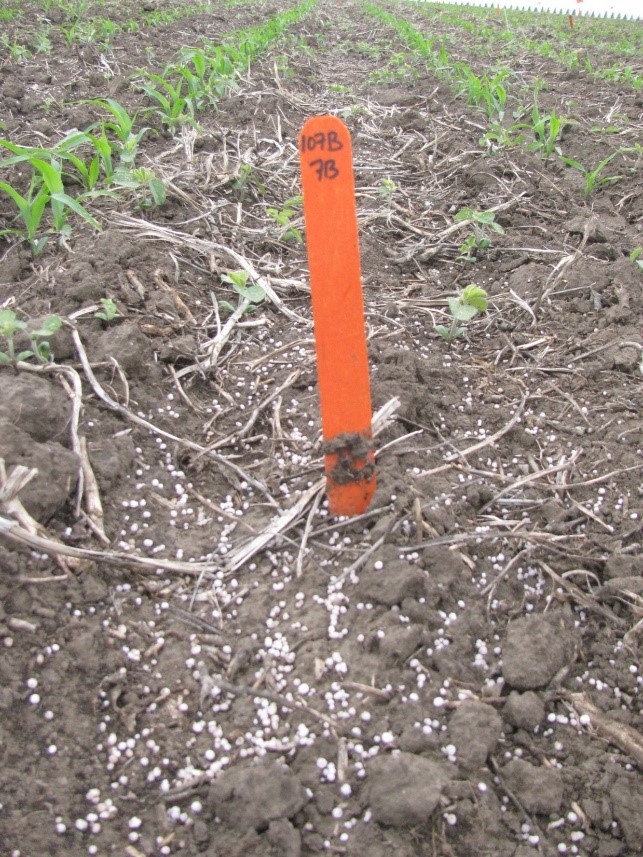
Figure 1. Topdressing corn with urea treated with N stabilizer.
Nitrification occurs when soil organisms convert ammonium to nitrate (NO-3), which is the available form by which most plants take up N. Because nitrate can easily be moved deeper into the soil away from the reach of plant roots (nitrate leaching) by rainwater, nitrification inhibitors can minimize the loss.
Nitrification inhibitors (e.g. SuperU®, Agrotain Plus®, Instinct II, N-Serve) kill a specific group of bacteria (nitrifying bacteria), which are responsible for converting ammonium to nitrate.
Nitrification inhibitors are most valuable when NO3- losses are expected to be high from leaching or denitrification, under the following conditions:
- Wet or poorly drained soils
- Tile-drained soils
- Fall N application
Denitrification: When soil microbes convert nitrate-N or any N fertilizer to the gas form of N. This form of N is not easily used by plants but is easily lost to the atmosphere. This happens when the soil is too wet (saturated).
Ammonia volatilization: When N fertilizer is applied and left on the soil surface or covered with only a thin layer of soil, the N can be converted to NH3 and lost to the atmosphere. More N is lost as NH3 at soil pH greater than 7 when residue is left on soil.
Some products are proven to successfully reduce N release, because they effectively coat urea, and allow the N to be released slowly (e.g., ESN) to coincide with crop needs. However, the release can be too slow and the N become available too late. Preplant application and incorporation of a blend with urea (3 or 4-parts urea to 1-part ESN) before planting in spring could be beneficial to corn and wheat.
Remember to only use specific N stabilizers for what they are proven to do and only apply them when they are most needed.
Jasper M. Teboh, Ph. D.
Jasper.Teboh@ndsu.edu
Research Soil Scientist


